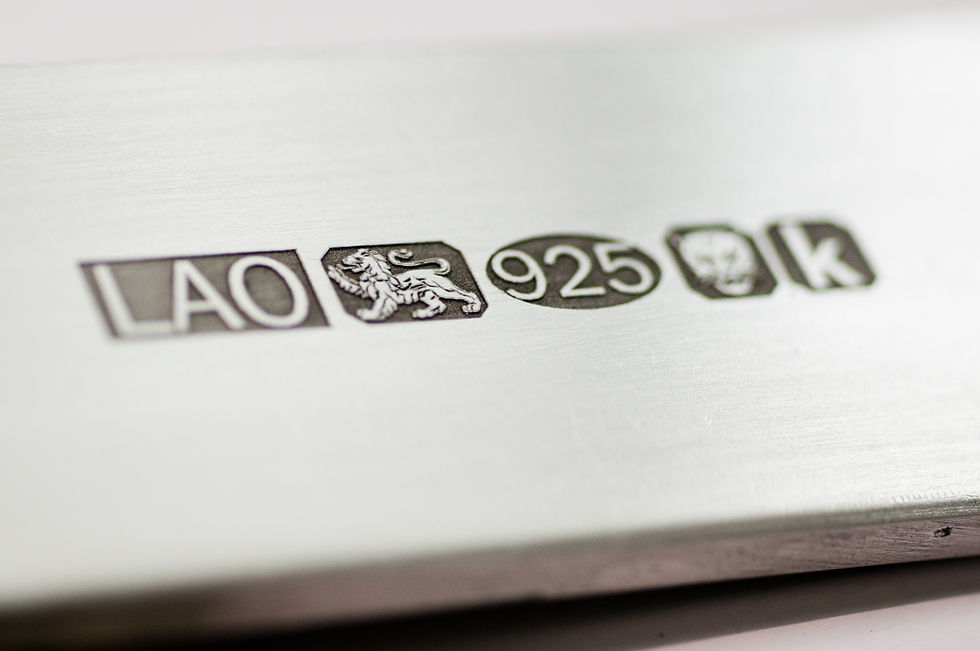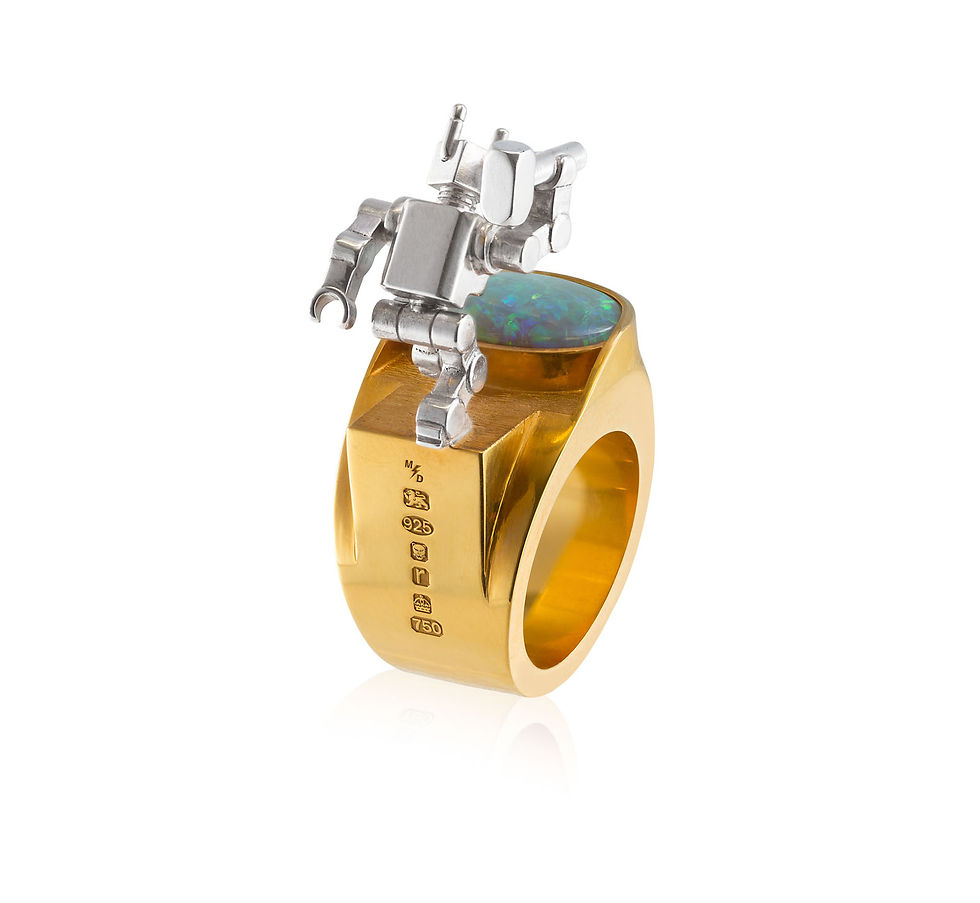Note: In the US, this is referred to as 'Stamping"

Hallmarking is one of the oldest forms of consumer protection. The Goldsmiths' Company in London has been "hallmarking" for over 700 years. In fact, the term "hallmarking" comes from the fact that jewelers had to take their items to Goldsmiths' hall for them to be assessed and marked.
Since 1972, an international convention has been signed on hallmarking, which makes the whole process of understanding a lot easier.
18K Gold is not pure gold!
Nearly all jewelry sold is not pure gold or silver. These pure metals are far too soft and so the jewelry would not be durable and damage easily.
Instead, we use alloys. An alloy is a mixture of two or more elements. Specific additions can help to improve the properties. This includes strength and hardness, but we can also change the color (for example, white gold) and other useful properties! They are not impurities, but deliberately added!
Why do we hallmark?
Because we use alloys rather than pure metals, there is a need to know what the "quality" or fineness of the jewelry alloy is. Hallmarking is a legal guarantee of what proportion (by weight) of the alloy is a particular precious metal.
What is the advantage of a hallmarked item?
A hallmark means the article has been tested (in the UK, it is performed by an independent body).
It guarantees that it conforms to all legal standards of purity (fineness). It also guarantees provenance by telling us where the piece was hallmarked, what the article is made from, and who sent the article for hallmarking.
What do all the marks mean?

By the international convention, three marks are required:
Sponsors Mark
An indication of who took the piece to be hallmarked.
Millesimal Fineness Mark –
An indication of the fineness of the lowest standard alloy in the piece of jewelry
e.g. if a piece was made of 18K and 14K Gold, then the piece would be hallmarked 14K. This guarantees that the quality of the whole article is no less than the fineness indicated.
Assay Office Mark
Where the piece was tested.
The common control mark is used in countries that are subscribed to the convention. This is the one with the scales. In these countries, all four are used.
Note, in the UK, there are often additional marks, namely the "traditional fineness mark" (for sterling silver it is a lion) and the "date mark" (a single letter) which tells us the year in which it was marked.
So which mark tells me the fineness of my piece?
The fineness mark is the key indicator of what proportion is made of a particular precious metal. The convention marks are as follows:

The number indicates the fineness. For example, 800 means 80% of the weight of the alloy is made from this precious metal. The shape of the "shield" around the number tells you the type of metal.
Remember, this is a mark for the fineness of the lowest standard alloy, so some bits may be made of higher fineness, but none of lower standard.
Why is there more than one fineness stamp?
Sometimes a jewelry item will be made of more than one precious metal. These are known as "mixed metal" and each precious metal can be hallmarked.

According to the London Assay Office (July 2022), the rules are as follows:
To be marked, the two metals should be distinguishable by color.
e.g. Yellow gold and sterling silver would be marked, but White gold and sterling silver would not
Each precious metal must be at least the minimum legal fineness for that metal,
i.e. silver 80%, palladium 50%, gold 37.5% and platinum 85%.
The main hallmark will be for the component with the least precious metal.
Any other hallmarks will be for parts made of a different precious metal with higher precious metal content
If an item contains a clearly visible non-precious "base" metal part, the word METAL must be applied next to the Hallmark on the precious metal part.
Where practical it is also stamped on the base metal part.
What about plated items?
Under the convention, any plating is not hallmarked. This is different in the US, where a plating will be marked. If the metal underneath is precious, then this will be hallmarked.
The rules for plating are as follows:
If the metal underneath is the same precious metal as the plating, then the plating must be of equivalent or higher fineness.
Any precious metal used for plating must equal or exceed the minimum fineness standard.
This means gold platings must be 10K, silver platings 80% (by weight), etc.
Precious metal cannot be plated with a non-precious metal.
Disclaimer: This is a general guide and does not serve any legal purpose. The legal requirements may change and differ from the time when this was written.








Comments